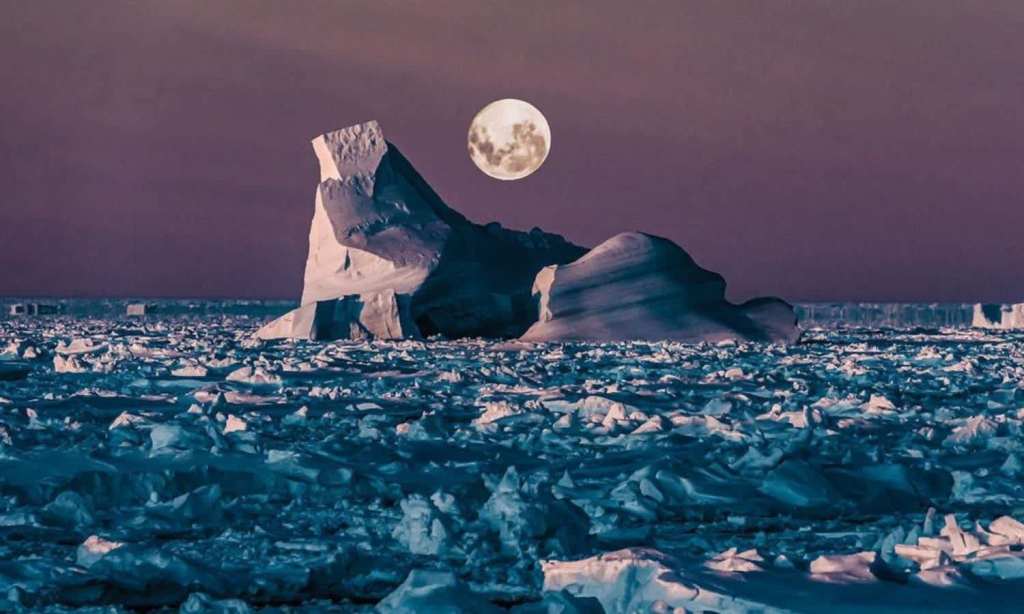Fun fact: Antarctica is not a country whatsoever. According to Intrepid Travel, it’s a “continent unto itself” — and it’s governed under a series of recognised guidelines and agreements called the Antarctic Treaty System; 54 countries are signatories (yes, Australia is one of them).
And as Antarctica is technically not a country, the continent has never had an official flag — one that’s entirely its own. Until now.
As Dezeen reports, there is now officially an Antarctic flag, the first one to be supported by an international association, the Council of Managers of National Antarctic Programs, and the first flag to be widely used across the continent.
Designed by American journalist Evan Townsend, the True South flag features an “icy white peak, mirrored by a south-facing compass arrow”, according to Dezeen. The flag aims to give the uninhabited continent — that sees 10,000 scientists and support staff in summer, and around 1,000 in winter — a voice in the climate crisis.
As Townsend tells the publication, “Antarctica doesn’t have a permanent population, but it is one of the places that is most susceptible to the global climate crisis.”
This announcement comes on the heels of a new study, that found that of the world’s 220,000 glaciers, almost all of them are becoming thinner and losing mass. And even more worryingly, these changes are picking up pace.
ETH Zürich, also known as the Swiss Federal Institute of Technology in Zürich — they count Einstein (yes, that Einstein) as an alumnus — is behind the study.
The research team looked at imagery captured onboard NASA’s Terra satellite, along with the full archive of ASTER images, to create high-resolution digital elevation models of the world’s glaciers — a time series of glacial elevation, which was how they were able to calculate changes in thickness and mass of ice over time.
As for what they found? Between 2000 and 2019, the world’s glaciers lost a total of 267 gigatonnes — one gigatonne is equivalent to a billion metric tonnes— of ice per year on average. If your mind can’t quite comprehend that (it made our heads dizzy), that amount of ice could’ve submerged the entire surface area of Switzerland under six metres of water — per year.
It’s like the co-author of the study, Daniel Farinotti said: “Our findings are important on a political level. The world really needs to act now to prevent the worst-case climate change scenario.”
Read more stories from The Latch and subscribe to our email newsletter.







